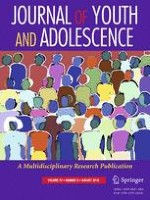17-05-2018 | Empirical Research
Different Kinds of Lonely: Dimensions of Isolation and Substance Use in Adolescence
Gepubliceerd in: Journal of Youth and Adolescence | Uitgave 8/2018
Log in om toegang te krijgenAbstract
Social isolation is broadly associated with poor mental health and risky behaviors in adolescence, a time when peers are critical for healthy development. However, expectations for isolates’ substance use remain unclear. Isolation in adolescence may signal deviant attitudes or spur self-medication, resulting in higher substance use. Conversely, isolates may lack access to substances, leading to lower use. Although treated as a homogeneous social condition for teens in much research, isolation represents a multifaceted experience with structurally distinct network components that present different risks for substance use. This study decomposes isolation into conceptually distinct dimensions that are then interacted to create a systematic typology of isolation subtypes representing different positions in the social space of the school. Each isolated position’s association with cigarette, alcohol, and marijuana use is tested among 9th grade students (n = 10,310, 59% female, 83% white) using cross-sectional data from the PROSPER study. Different dimensions of isolation relate to substance use in distinct ways: unliked isolation is associated with lower alcohol use, whereas disengagement and outside orientation are linked to higher use of all three substances. Specifically, disengagement presents risks for cigarette and marijuana use among boys, and outside orientation is associated with cigarette use for girls. Overall, the adolescents disengaged from their school network who also identify close friends outside their grade are at greatest risk for substance use. This study indicates the importance of considering the distinct social positions of isolation to understand risks for both substance use and social isolation in adolescence.
